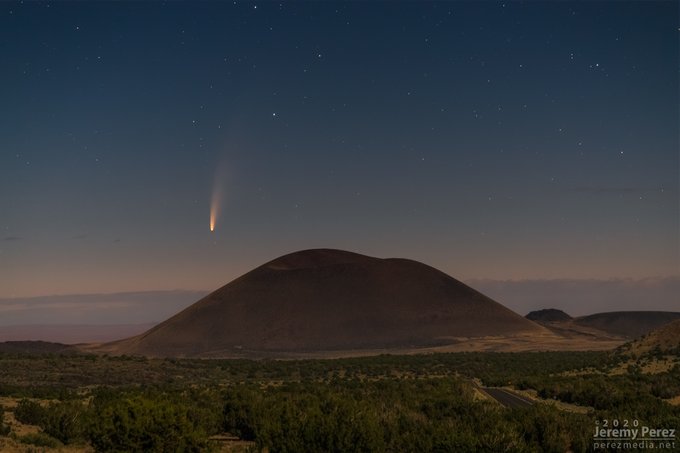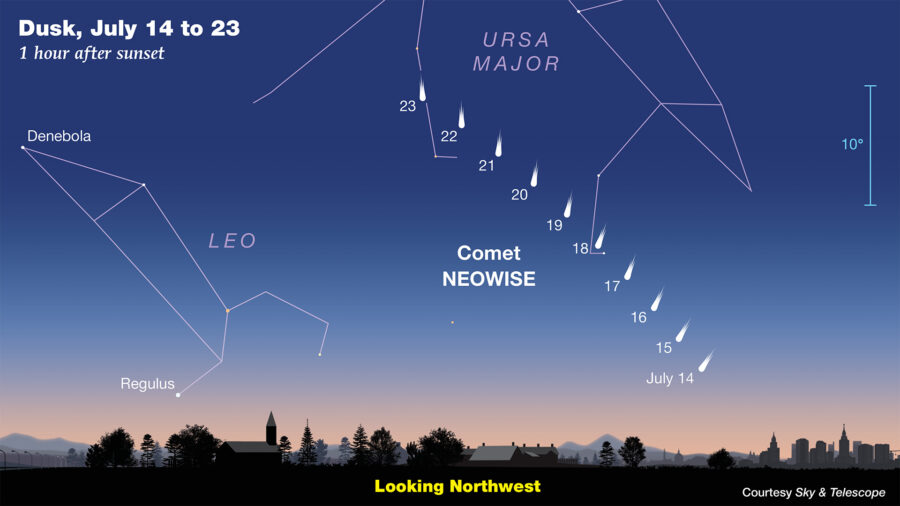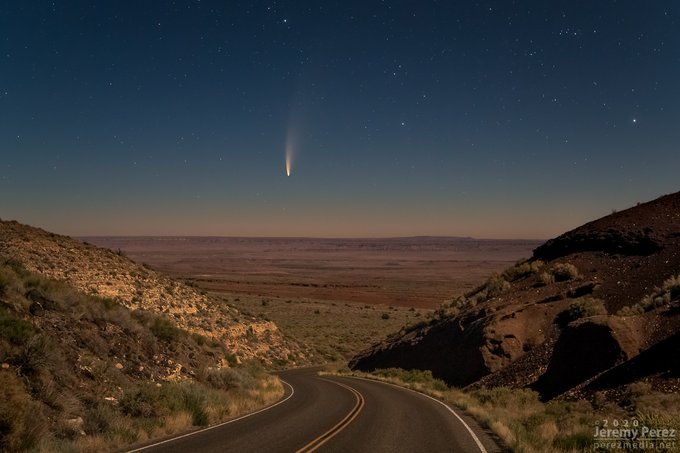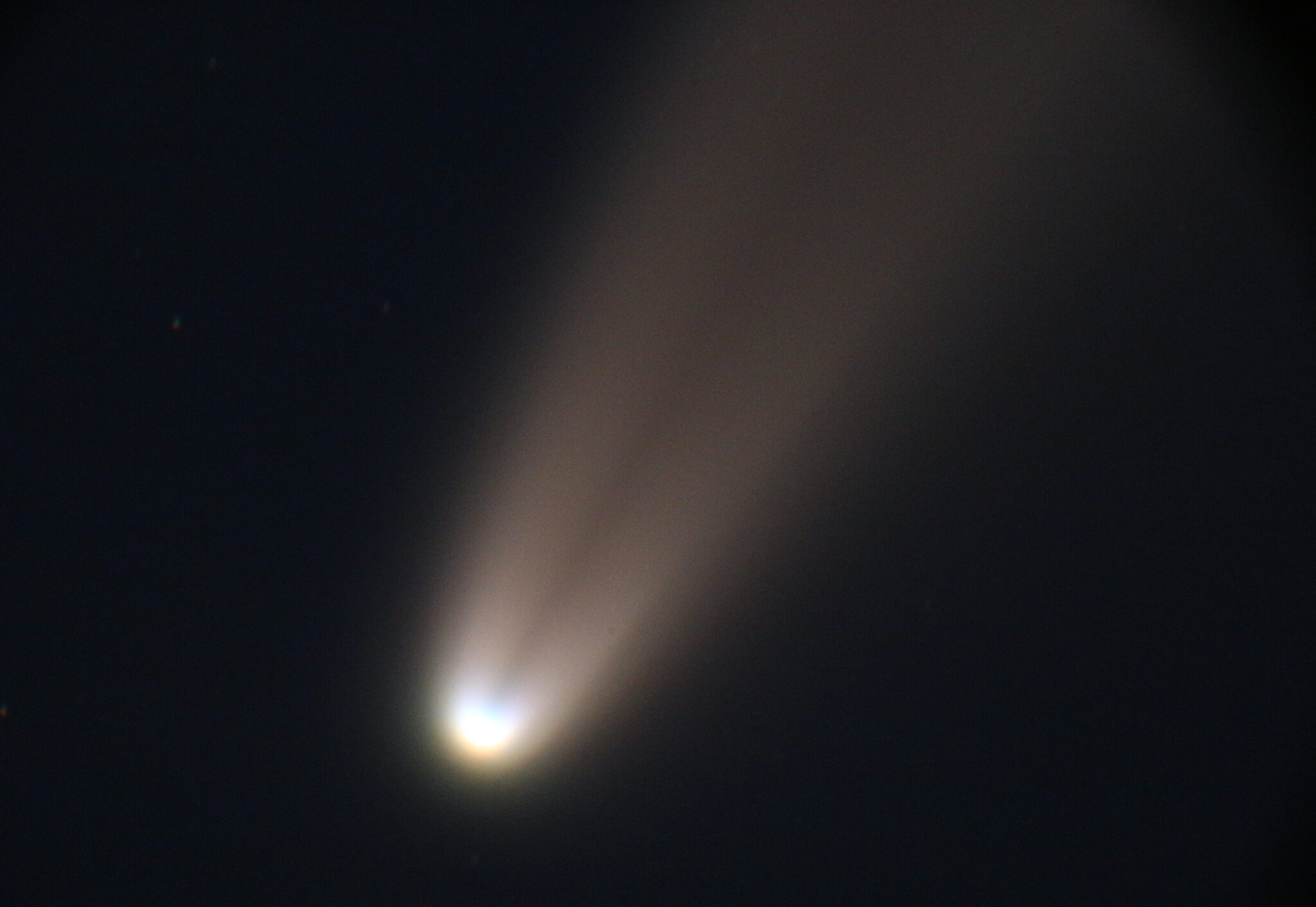Comets are small, fragile, irregularly shaped bodies composed of a mixture of grains and frozen gases. They have highly elliptical orbits that repeatedly bring them very close to the Sun and then swing them deeply into space. As comets approach the Sun they develop enormous tails of luminous material that extend for millions of kilometers from the head, away from the Sun. When far from the Sun, the nucleus is cold, and its material is frozen solid within the nucleus. When a comet approaches within a few Astronomical Units (1 AU equals approximately 150 million kilometers) of the Sun, the surface of the nucleus begins to warm, and volatile material on the comet evaporates.

via @thejournal_ie
Comets are very important to learn because they are great timekeepers of the universe. They may be the oldest, most primitive bodies in the solar system, preserving the earliest record of material from the nebula which formed the Sun and the planets. On their closest approach to our Sun, they shower their particles and even crashed on to some planets and bring volatile light elements to the Earth’s, playing a role in forming oceans and atmospheres. They are the most organic-rich bodies in the solar system providing ready-formed molecules possibly involved in the origin of life on Earth!
However, there is no evidence found yet. The impact of the Earth and other planets at hyper velocities causes significant changes in climate and dramatically affects the ecological balance, possibly including the extinction of the Dinosaurs. It is believed that they are the building blocks of planetary systems around other stars?

Credit; Jeremy Perez
What’s unique about the Comet Neowise?
Our new guest in space has traveled for 3000 years to be seen from Earth. The object was discovered by a team using the NEOWISE space telescope on March 27, 2020. It was classified as a comet on March 31 and named after NEOWISE on April 1. On July 13, 2020, a sodium tail was confirmed. The first ones to find out that NEOWISE had a sodium tail were Twitter users who went by the name of GalacticMilk, CometExtra, Octalactic, Parthbh21167752, and HaleBopp2007 on July 12.

The comet cruised just inside Mercury’s orbit on July 3. This very close passage by the Sun is cooking the comet’s outermost layers, causing gas and dust to erupt off the icy surface and creating a large tail of debris. And yet the comet has managed to survive this intense roasting and is easily visible and observable in the sky to all-this is what excites the skywatchers.

By July 2020, it was bright enough to be visible to the naked eye. It is one of the brightest visible to observers in the northern hemisphere since Comet Hale–Bopp in 1997. Under dark skies, it can be clearly seen with the naked eye and might remain visible to the naked eye throughout most of July 2020. From July 15 onwards, the comet will be seen from the subcontinent in the northwestern direction at 20 degrees latitude.

Phot Credit: Rome Starch
Observers worldwide are racing to see the natural fireworks display before the comet speeds away into the depths of space. Even the astronauts aboard the International Space Station (ISS) spotted it from their vantage point high above Earth’s atmosphere. It has become a trending topic for discussion in the day to day webinars and forums across the scientific community. People worldwide share the photographs and facts about this comet and celebrate this astronomical event like a festival.
Also Visit: Historic moments for SpaceX through the lens of Camera

Sandeep Poddar is the convener of Ignited Minds Science Club affiliated with VIGYAN PRASAR. He is a Science Communicator and develops and presents scientific content for Yuvaaz Podcast.
He can catch at; http://www.ignitedminds777.wordpress.com/

